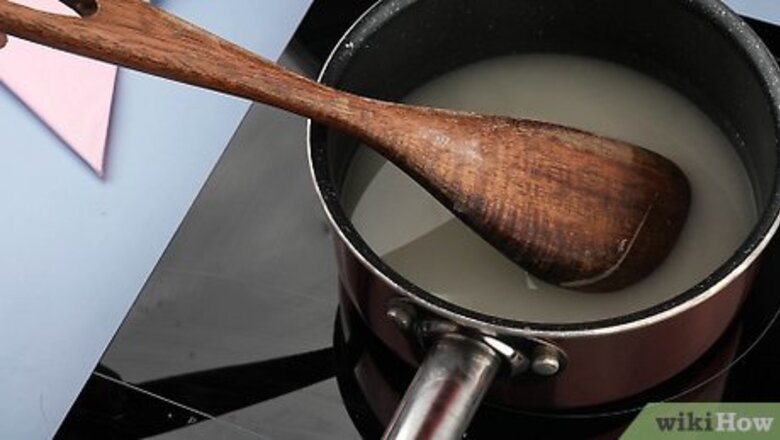
views
Simple Cream Soda
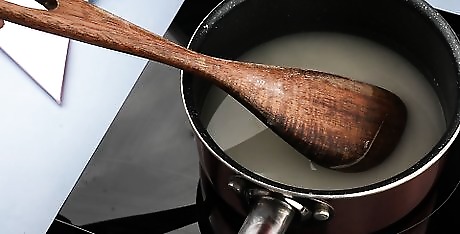
Boil sugar and water in a saucepan. Mix 2 cups (400g) granulated white sugar into 1 cup (240mL) water. Bring the solution to a boil, stirring until the sugar dissolves.

Mix in vanilla. For the best flavor, scrape out a whole vanilla bean, mix in the goo, then drop the empty pod in as well. You can substitute 1 tbsp (15mL) vanilla extract instead, or use vanilla paste as directed on the label. Not all extracts are created equal, and in cold drinks like this the flavor difference is obvious. In the US, look for "vanilla extract" (or "vanilla flavor" for an alcohol-free option), and avoid "imitation vanilla." In Europe, look for anything labeled "natural." Most vanilla extracts from Latin America are inferior products, although often cheaper.
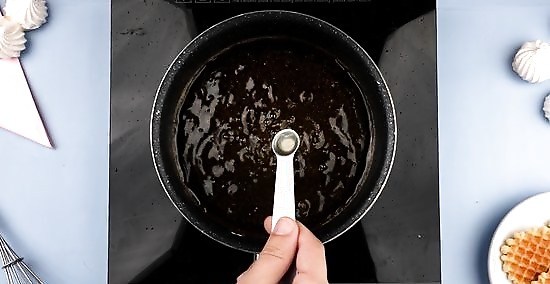
Add lemon juice or cream of tartar. Stir in ⅛ tsp (0.6mL) lemon juice or cream of tartar. This will "invert" the syrup, which makes it sweeter, helps the sugar dissolve, and increases shelf life. This ingredient goes back to at least 1852, and might be the reason it's called "cream soda." Some modern commercial sodas use it as well, so you might be familiar with the taste. There may be some health concerns related to the "unbounded fructose" in inverted sugar. Consider asking your doctor first if you have diabetes.
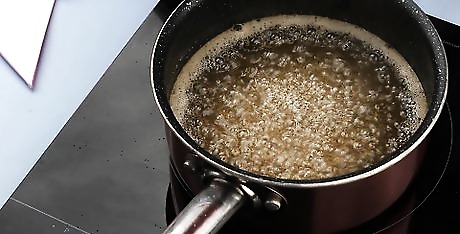
Simmer for 5–10 minutes. Simmer over medium-high heat, reducing heat if bubbles are building up above the surface. The mixture is ready when a candy thermometer reads 220ºF (104ºC), or when it's syrupy, brown, and covered in small, thick bubbles. If you don't have a candy thermometer, you might want to take the pan off the heat while the syrup is still clear or light brown, to prevent burning. The lighter the syrup is, the less caramel flavor the soda will have. Sugar syrup gets dangerously hot. Handle with care and keep away from children.
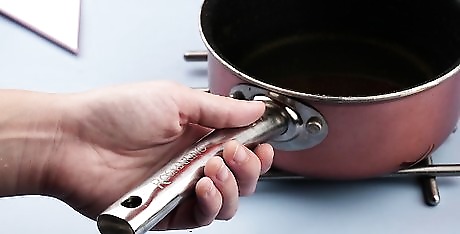
Let cool 5 minutes. Move the pan to another burner and wait for it to cool to a safer temperature.
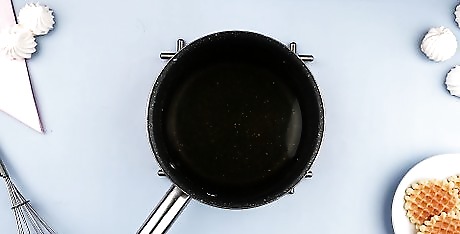
Steep at room temperature for one hour. This gives the syrup time to absorb the vanilla, which is the main flavor of cream soda.
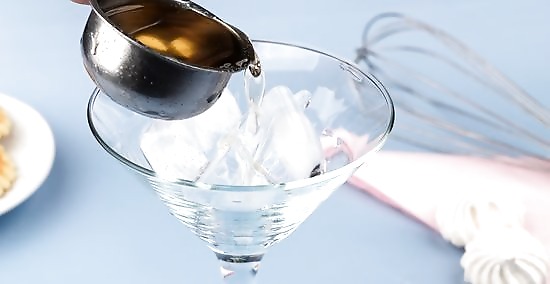
Mix the syrup with carbonated water and ice. When you're ready to drink your soda, stir the syrup into carbonated water (seltzer) and ice. Try 1–2 tbsp syrup per 12 oz glass (15–30mL per 360mL), then experiment to make it as sweet or mild as you like your soda. That's one of the benefits to making it at home! If you used a real vanilla bean, remove the pod and throw it away. If you dislike the seeds in your drink, strain the syrup through a cheesecloth. (Try it with the seeds first — many people don't mind them, and the cheesecloth will soak up some of your syrup.) Store extra syrup in the refrigerator. It will usually last at least a week.
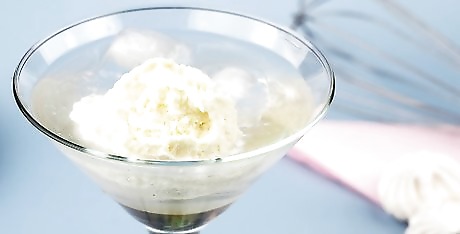
Add cream or ice cream (optional). Most of the time, cream soda doesn't actually contain cream, but a spoonful of cream or half-and-half does give it a nice foam. For the full dessert option, use a spoonful of vanilla ice cream instead. Since this soda is acidic, there is a chance that the dairy will curdle. Avoid this by pouring slowly and starting with chilled water. Lower-fat products (whole milk or skim milk) are more likely to curdle.
Cream Soda Brewed from Scratch

Pour the sugar into a sterilized bottle. Pour ¼ to ⅓ cup (50–66g) white granulated sugar into a 1 pint (500mL) sterilized bottle. In this recipe, we'll use sugar and yeast to carbonate our own soda. There is a chance of explosion from any home brewing. A plastic bottle is less sturdy (especially the bottle cap), but less dangerous if it does explode. A glass bottle from a brewing supply store is less likely to explode, but more dangerous. This is a very small batch compared to most brewing projects, which is good for a first timer who doesn't want to waste ingredients on mishaps. If you've already done some home brewing, you can increase this to a larger batch.
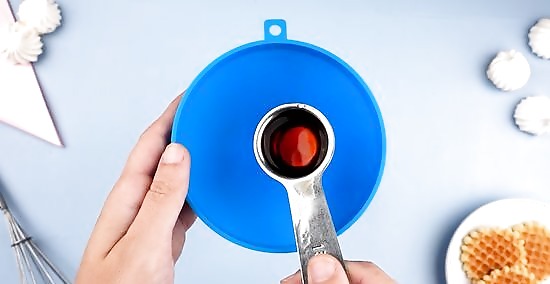
Add vanilla extract. Pour ½–1 tbsp (7.5–15mL) vanilla extract into the bottle, depending on how strong a flavor you're going for. Vanilla is the main flavor in most cream sodas.
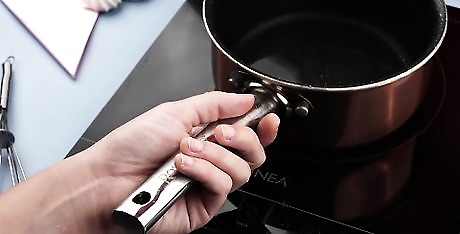
Warm the water in a saucepan. Heat the water until it reaches a temperature between 95 and 105ºF (35–40ºC). Cold water will not activate the yeast, and hot water will kill it.

Activate brewer's yeast and add it to the bottle. Combine a small pinch of yeast (about 1/16 teaspoon / 0.3mL)) with a little warm water and 2 tsp (30mL) sugar. Cover the mixture and wait about 6–10 minutes, or until you notice foam and a distinct yeast scent. Pour the mixture into the bottle, using a funnel. You can use baker's yeast in a pinch, but this is not recommended. You may end up with unpredictable amounts of carbonation, or a less pleasant flavor. You can skip the activation, but the soda will take longer to carbonate.
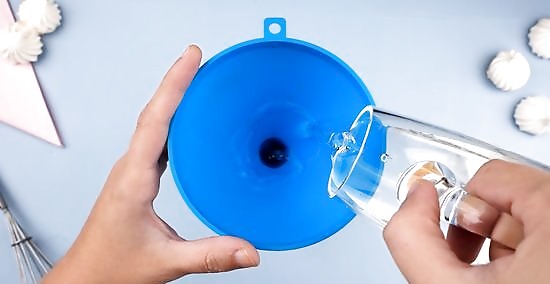
Add water and shake. Fill the bottle with warm water, leaving 1–2 inches (2.5–5cm) of space at the top. Secure the cap, and shake it until the ingredients have dissolved.
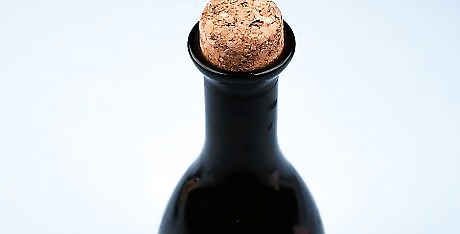
Let ferment at room temperature. Leave the bottle in a warm, draft-free location, preferably at 68–77ºF (20–25ºC). Check on it once or twice daily. The soda is ready when the bottle feels hard when squeezed, anywhere from 12–72 hours. If you didn't activate the yeast, this usually takes at least 48 hours. Leaving it at room temperature too long can generate enough pressure to explode the bottle! This is especially true at high temperature or if using old yeast.
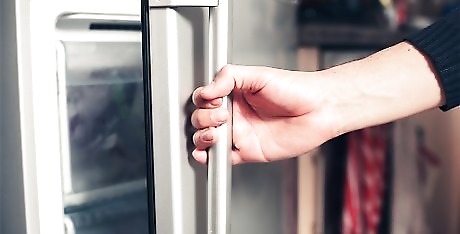
Move to the refrigerator. Place bottle in refrigerator (below 40ºF/5ºC) for 24-48 hours to stop fermentation and let the yeast settle. Try to put it in a part of the refrigerator that isn't subject to temperature fluctuations (towards the back, away from the door). Try not to agitate the bottle at all.
Pour the drink carefully. Pick up the bottle slowly, to avoid disturbing the sediment at the bottom. Pour into a new bottle or a glass, leaving the last bit of sediment-filled liquid at the bottom of the bottle. Mixing that portion into your drink can lead to an overpowering yeasty taste.
Add a dollop of ice cream (optional). You can drink your cream soda plain, or mix it with ice cream for dessert.




















Comments
0 comment